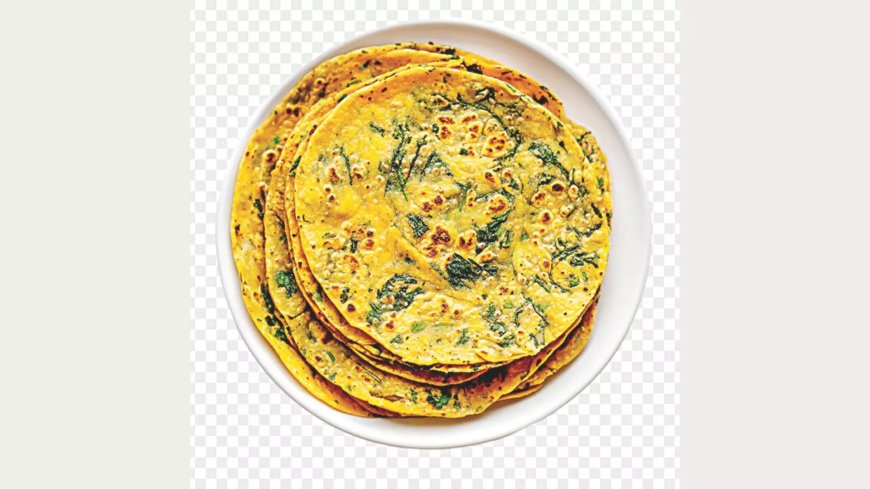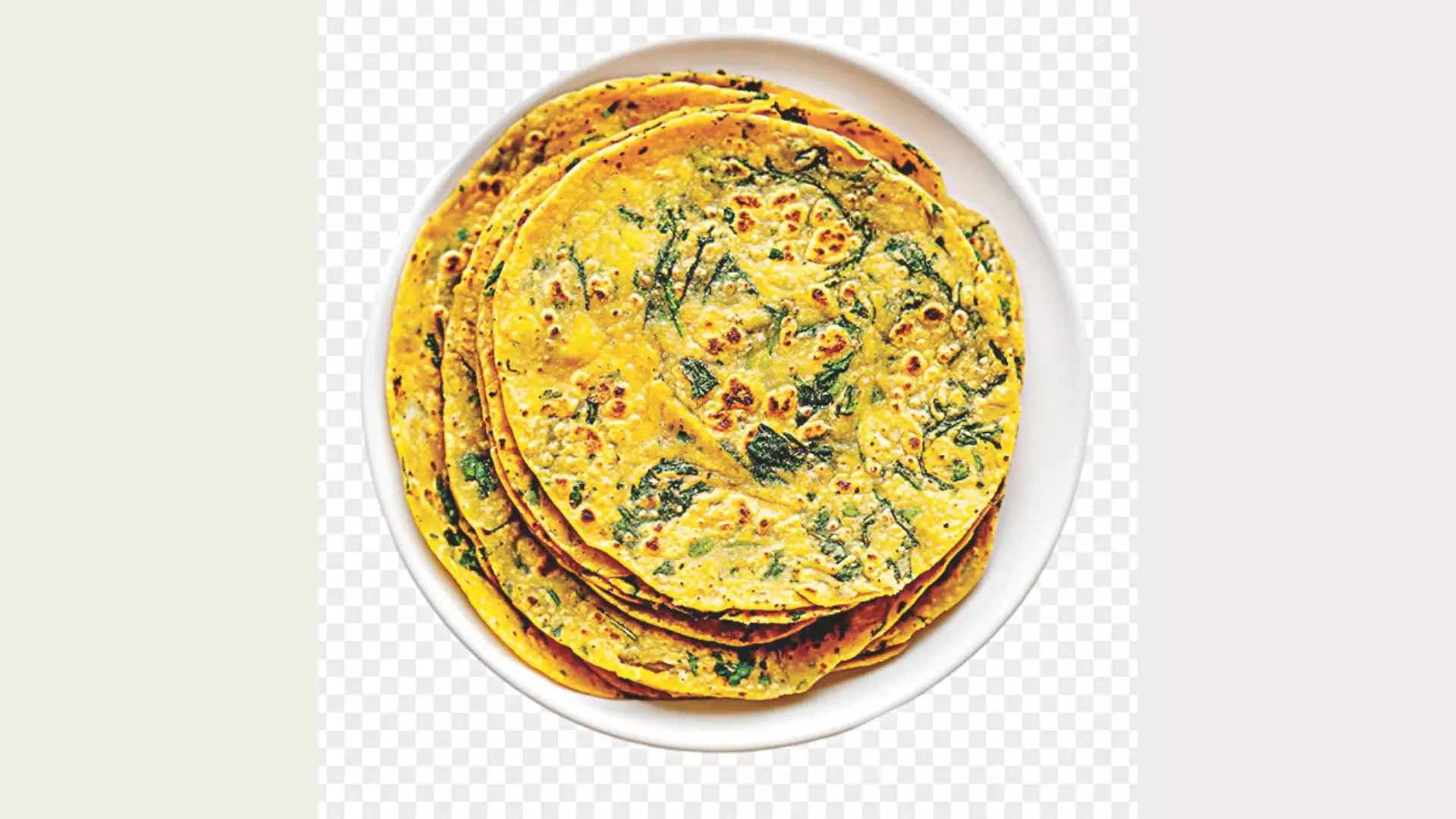The Miss-ing roti riot
Tempers fly high after Missi Roti named among “The 100 Worst Dishes In The World” by Tasteatlas, desi foodies give a mouthful


Food transcends mere sustenance — it is a bridge between history, culture, and community. Yet, this deeply personal and cultural connection to food often clashes with global rankings that reduce dishes to arbitrary criteria. The recent inclusion of Missi Roti — a quintessential North Indian staple — in the “100 Worst Rated Foods in the World” list at 56th has sparked debate. How does a dish cherished by millions suddenly fall under global scrutiny?
This controversy raises important questions: How do we judge food across diverse cultures? Why is global validation seen as the ultimate standard? And most importantly, how do we preserve the essence of traditional foods in an increasingly homogenized world?
Roti Ratification
Missi Roti isn’t just another bread; it’s a testament to India’s culinary heritage. This protein-rich flatbread, made with gram flour (besan) and wheat flour, has been a part of Indian households for generations. It’s rustic, earthy, and comforting — a dish that brings people together around shared traditions. As Neha Deepak Shah, the first runner-up of MasterChef India Season 4, describes “Missi Roti is a quintessential representation of India’s North Indian roots. Made from a blend of gram flour and wheat flour, it’s a nutritious, protein-rich bread that embodies simplicity and functionality. Traditionally served with ghee, pickles, or dals, it’s a staple in rural and urban households alike.”
The charm of Missi Roti lies in its versatility. Pair it with tangy pickles, hearty dals, or rich curries, and you have a wholesome meal.
Yet, to an untrained palate, Missi Roti might seem dense or bitter. When served hot, it’s soft and inviting, yet with the right preparation, it can also have a satisfying crispness. It’s the kind of dish that brings comfort, warmth, and nostalgia with each bite.
Knead Understanding
These rankings often rely on flavors that are familiar to global palates. Missi Roti’s dense texture and slightly bitter taste may not resonate with everyone, but that doesn’t mean it lacks value. Food is subjective, and what’s adored in one culture might not be universally embraced. Dismissing it based on these criteria ignores the cultural richness and history that Missi Roti represents.
The idea of ranking foods across cultures is inherently flawed. Food is deeply contextual and personal—what delights one person might puzzle another. As Antoine Lewis, a renowned food critic, points out “Why would you want to rank food? Food isn’t meant to compete — it’s meant to be appreciated within its own context. Comparing one dish to another, especially across cultures, doesn’t make sense.”
Moreover, these rankings often ignore the significance of food as part of a larger experience. Judging Missi Roti in isolation, without its traditional pairings like dals or chutneys, is akin to eating sushi without soy sauce or pasta without sauce. The dish’s context and accompaniments are essential to its appeal. Neha Shah notes “Missi Roti’s flavors, like its slight bitterness or dense texture, may be an acquired taste. Food preferences are highly subjective and influenced by cultural conditioning. What is cherished in one culture might feel ‘unusual’ or ‘bland’ to another.”
Missi-understood
Understanding food requires more than just tasting it; it demands an appreciation of the culture it comes from. Missi Roti is a symbol of resourceful cooking, combining locally available ingredients into a nutritious staple. It carries the essence of North Indian kitchens, where simplicity meets ingenuity. For someone unfamiliar with the culture, this significance might be lost. Neha Shah explains, “Without understanding the role a dish plays in its origin, it’s easy to misinterpret its flavour and significance. Missi Roti isn’t just a bread; it’s a symbol of resourceful cooking, combining readily available ingredients into a wholesome meal.”
Each region in India brings its own touch to Missi Roti. In Rajasthan, for example, the bread might be made spicier, with additions of crushed red chillies or carom seeds (ajwain) for extra flavour. In Punjab, it’s often paired with a dollop of butter or ghee, elevating its comfort food status. These regional variations show how Missi Roti can be adapted to different tastes and dietary needs, making it a truly versatile dish.
One of the more perplexing aspects of the debate is the assumption that food needs global approval to matter. Why does it matter if Missi Roti isn’t popular in New York or Paris? Lewis argues: “Indian food is already loved by millions, and that speaks louder than any ranking ever will. If our food isn’t appreciated globally, does that mean it’s not good enough? That doesn’t make sense.” Indian cuisine, rich and diverse as it is, doesn’t need to conform to global tastes. Missi Roti doesn’t have to be universally adored to be valuable — it is already celebrated in India, and that’s enough.
Flavours Lost in Translation
Foods that achieve global fame often tick certain boxes: they’re easy to eat, visually appealing, and adaptable to different palates. Think of pizza, sushi, or pasta — dishes that can be customized and are universally palatable. Missi Roti, with its bold and polarizing flavours, may not fit this mould. Shah adds that storytelling can play a crucial role in bridging cultural gaps: “Education begins with storytelling and experience. Showcasing Missi Roti in the context of a complete meal, along with its history, health benefits, and regional variations, can foster appreciation.”
Moreover, Indian food, with its deep roots in tradition and bold flavours, has gained recognition on the global stage with dishes like biryani, masala dosa, and butter chicken. These foods have successfully navigated cultural boundaries due to their accessibility, adaptability, and universality. Missi Roti, while perhaps less well-known internationally, doesn’t need to follow the same trajectory to be valuable. Its appeal lies in its authenticity and the sense of home it provides to those who cherish it.
Missi Roti doesn’t need to top global charts to matter. Its true worth lies in its role in Indian households, its nutritional value, and its ability to bring comfort and nostalgia to those who eat it.
Roti Rigmarole
Famous food and travel guide Tasteatlas released its latest “100 Worst Rated Foods in the World”
list in January 2025 in which the famous North Indian Missi Roti landed at the 56th spot.
Food isn’t meant to compete—it’s meant to be appreciated within its own context. Comparing one dish to another, especially across cultures, doesn’t make sense.” — Antoine Lewis, a renowned food critic






































